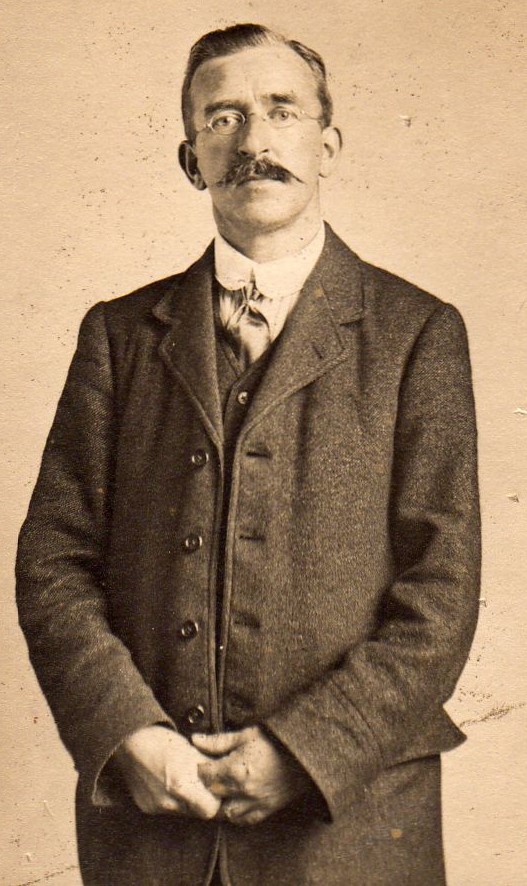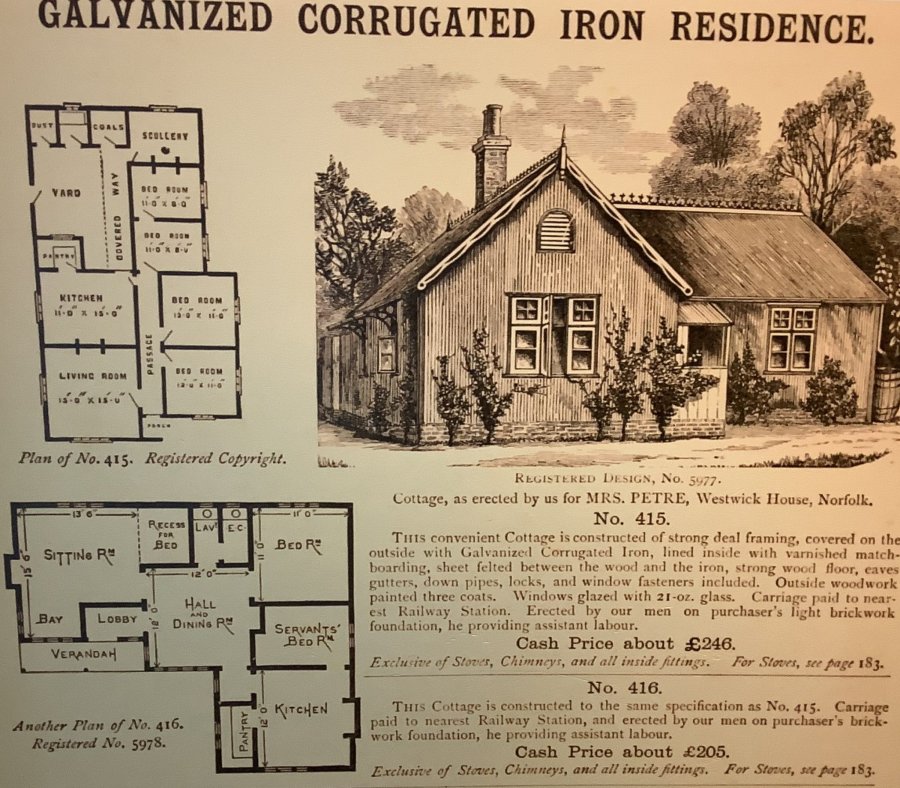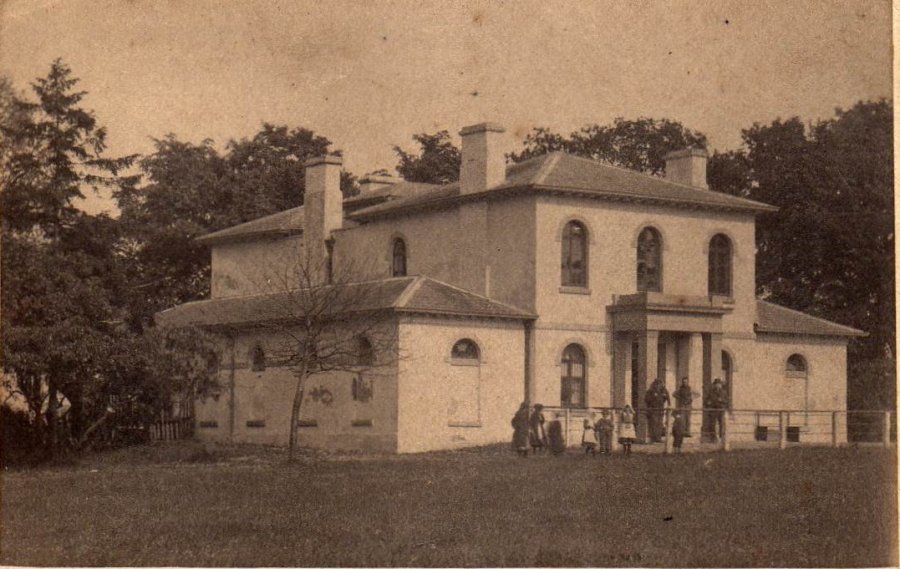History
- Family Home
The cottage was a home - Rare historic building
Early pre-fab iron cottage - Historic Woodhall Spa
History of the resort - Wartime Woodhall
Woodhall Spa during the war - Today's Museum
The Cottage Museum today - Community Archive
Preserving the past of Woodhall
Family home

The story of the Wield family is centred on John Wield because it is largely owing to him that the Cottage museum exists.
Rare historic building

The cottage not only houses the Museum's collection but is itself the major exhibit.
It is constructed of corrugated iron laid on a timber frame. At one time the use of corrugated iron in this way was quite common for houses and other types of buildings such as churches, chapels and schools.
During the industrial revolution there was a rapid growth in urban populations and there was a need to provide cheap, portable buildings that could be quickly erected. Corrugated iron buildings were mass-produced and offered for sale. Corrugated iron churches, chapels and school houses could be bought from a catalogue and large numbers of portable buildings were sent to Australia and California for the gold rush prospectors and newly set up farmers.
Historic Woodhall Spa
Woodhall Spa had its beginnings in the dream to sink a coal mine.
Woodhall Spa had its beginnings in the dream of John Parkinson Esquire to sink a coal mine. His speculation was a failure as no coal was found. However, the accidental discovery of "salt Water" at his coalmine shaft near Coal pit Wood in Woodhall eventually led to the erecting of a Bath House in 1834 by Thomas Hotchkin, the local squire. Mr Hotchin later built the Victoria Hotel in 1839 and the spa's mineral-rich healing waters became a magnet for the treatment of ailments such as rheumatism.

Wartime Woodhall
A Sea of Blue and khaki
Woodhall Spa would have been a sea of blue and khaki with the population of the village increasing tremendously. Estimates put the numbers of service personnel in and around Woodhall at between 4,500 - 5,000.
A number of seminal events were initiated from Woodhall: from here 617 Squadron undertook the majority of its wartime operations.
Additionally, the 1st Airlanding Brigade who fought at Arnhem were based here in Woodhall. The Brigade, which comprised three infantry battalions along with supporting units, requestioned hotels, billeted soldiers with local families and occupied hutted camps at Roughton Moor.
Victoria Cross's awarded with a Woodhall Spa connection Earth Museum Website
Today's museum
The Cottage Museum first opened its doors in 1987.
- A small community museum managed by volunteers. It is here today as a result of the great dedication and effort of volunteers from the community over the past twenty years.
- But it began with the vision of one man, John Wield, over a hundred years ago. He foresaw that one-day people would ask about the origins of the then young Victorian spa community and so set about recording what he could for the future.
- John had a fascination with the art of photography, one of his many interests, and it is his photographic collection, which forms the basis for today's Cottage Museum, the home of his family from 1887 to the 1960s.
- Richard Porter, a much-respected dentist who was living in John Wield's bungalow in the early 1980s, had become the guardian of John Wield's collection of photographs and ephemera.
- When he was about to move to Scotland he offered the collection to David Radford (the founding Chairman of the Trust) provided it was put on public display.
- Not long after that, in 1985, John Wield's bungalow came on the market. This seemed to be the ideal place to display the collection of the work of that far sighted photographer, in his own environment.
- After an initial meeting the community audience voted to support the idea of a museum and, in 1986, the Trust was formed.
Our mission
To reach out to the community at large by displaying and promoting the heritage of Woodhall Spa throughout its history
Our aims are:
- To preserve the bungalow, known as Woodhall Spa Cottage Museum, its environs and display its collections.
- To improve long-term sustainability of The Cottage Museum.
- To improve user numbers.
- To improve access to and promotion of our heritage.
- To find out about our audiences - users and non users
Community archive
The Woodhall Spa Cottage Museum holds a comprehensive archive collection consisting of numerous photographs, postcards, glass-plate negatives, books, ledgers, maps and local artefacts etc.
They are stored in a museum standard controlled environment. These have been and are still being recorded onto a computer database that can be accessed by the Visual Assets Team and the Collection Care Team.
If you wish to do any research about local community history then by contacting a member of the Visual Assets or Collection Care Teams one of the volunteers will willingly help you in your search:
As with any volunteer run charitable organisation, any donation towards the running of the museum would always be welcomed.